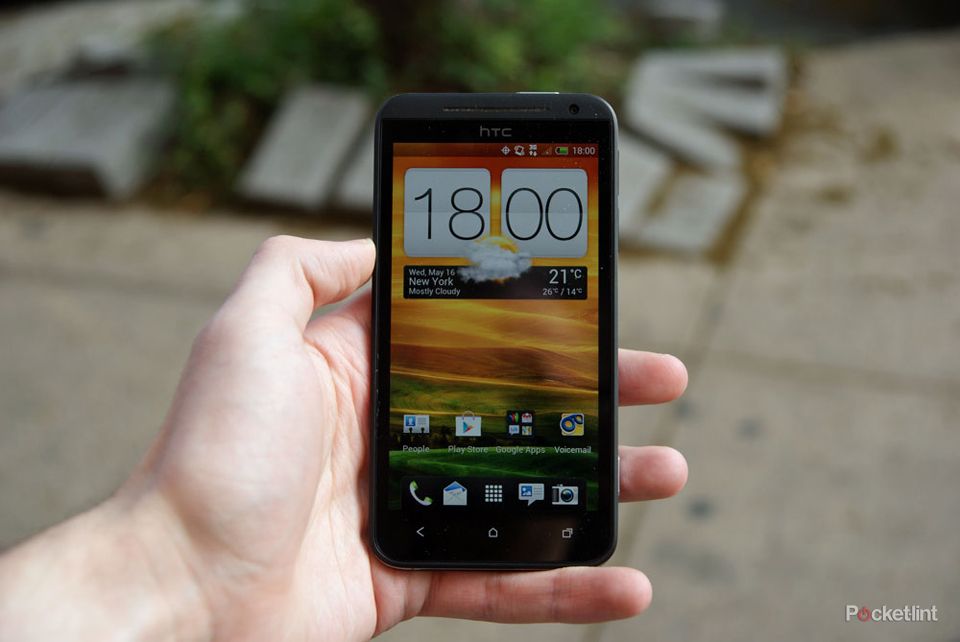The HTC Evo 4G LTE is the new flagship device for the USA’s Sprint network. It’s an Android Ice Cream Sandwich smartphone with, as its name suggests, the capability to hop aboard Sprint’s ultra-fast LTE data network.
Our quick take
While we couldn’t test the HTC Evo 4G LTE at its speedy best, it’s a very high quality smartphone even without 4G.
The build quality, screen, camera and processor are all top notch, the kick stand is a useful feature, and most other aspects are well above average. We’re not so keen on the embedded SIM and battery and the unsightly backside of the phone, but neither of these are deal-breakers.
If you’re happy to sign up to a long-term contract with Sprint and live in a US city where the carrier’s LTE network is incoming, you should definitely give the Evo 4G LTE a lot of consideration. It’s a very solid high-end smartphone.

HTC Evo 4G LTE - 4.0 / 5
| FOR | AGAINST |
|---|---|
|
|
Unfortunately, as we write this the LTE network is yet to be rolled out, so we weren’t able to test out the phone’s 4G capabilities. We should also note that its Google Wallet NFC abilities were not activated as we were reviewing it, but bear in mind that these things should be operational soon - LTE has been announced as coming to several US cities in "mid-2012".
Build quality and design
What we can assess is the Evo 4G LTE’s hardware, and very impressive it is. The phone sports a huge 4.7-inch screen, yet is just under 9mm in depth and weighs a feathery 134g.
From the front it looks like many other HTC smartphones: the screen dominates and there are three touch buttons at the bottom for back, home and multi-tasking; there’s also a 1.3MP front camera.
A sliver of brushed aluminium runs around the edge of the phone, which looks good and more importantly provides stability - despite its size, it’s a very solid, non-creaky phone. Elsewhere around the sides you’ll find a USB port, camera button, volume rocker, 3.5mm headphone socket and power button.

We’re not huge fans of the back of the Evo 4G LTE, which is shiny at the top and rubbery at the bottom. It just looks a bit odd to us - we’d rather they go with one or the other. Dividing these two sections is a red metal strip that can be prised out to provide a handy kickstand (this works in both portrait and landscape mode). There’s also the 8-megapixel main camera and an LED flash.
The Gorilla Glass-fronted 4.7-inch Super LCD screen is vibrant, bright and wonderfully sharp, boasting a 1280 x 720 resolution (so it’s ideal for watching 720p HD videos). That’s a pixel density of 312ppi, almost as high as the iPhone 4’s 326ppi screen.
Camera and storage
The camera is a beast, boasting 8-megapixels and an F2, 28mm equivalent lens. The dedicated button brings it up instantly if you don’t fancy tapping the icon, and can be used to trigger the shutter too. Stills are lovely, demonstrating good clarity even in gloomy conditions, and HD video (in up to 1080p) is as impressive as anything we’ve seen from a phone. The camera’s also blindingly fast, booting up and autofocusing swiftly, and uploads shots automatically to a Dropbox account - up to 25GB of them!
There’s 16GB of storage inside, plus a microSD slot allowing you to add another 32GB. Both the SIM and 2000mAh battery are embedded and non-removeable, which, let’s face it, isn’t ideal if you plan on doing anything with the phone other than use it on Sprint. Speaking of the battery, it’s got a decent bit of stamina considering the amount of power-sapping stuff going on inside the phone – but you’ll probably want to charge it once a day.

The phone runs on a 1.5GHz dual-core Snapdragon S4 processor and features 1GB of RAM, and it runs very fast indeed. It racked up a whopping score of 6667 in the AnTuTu Benchmark test, putting it slightly above the Samsung Galaxy Note and Nexus. You can throw pretty much any app at this phone or ask it to multitask and it’ll oblige.
Beats
As has become HTC’s signature, there’s Beats Audio tech inside, which is essentially a big old bass booster for whatever is playing. It doesn’t ensure you get top quality sound - your headphones contribute to that a lot more - but it’s a welcome addition.
Android 4.0 Ice Cream Sandwich and HTC Sense 4 work in much the same smooth fashion as they do on the HTC One phones. There’s minimal lag when flicking between homescreens, and Sense is a very pleasant UI to use for the most part.
To recap
Another strong Ice Cream Sandwich phone from HTC, with a great camera, but it’s hard to judge its true potential until we see it rocking LTE speeds
